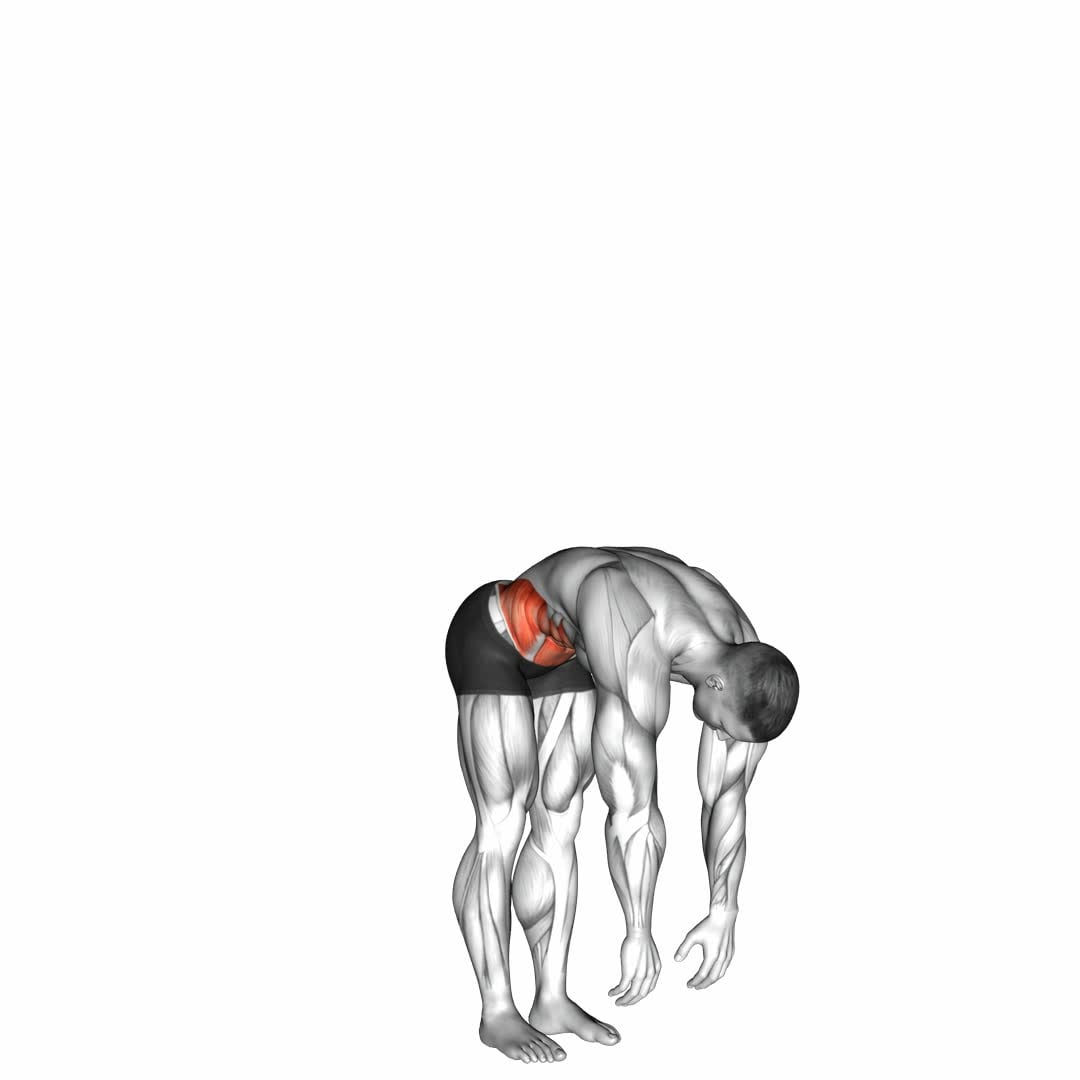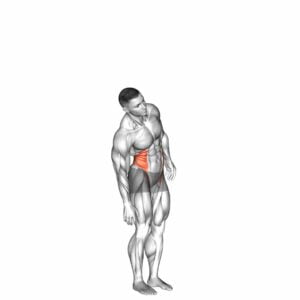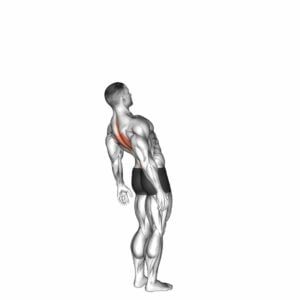Spine (Lumbar) – Flexion – Video Exercise Guide & Tips

Looking to strengthen and improve flexibility in your lumbar spine? Our video exercise guide and tips will show you the benefits of lumbar spine flexion exercises and how to perform them with proper form and technique.
Watch This Exercise Video
Watch our informative demonstration video and discover tips for maximizing the effectiveness of these exercises. Avoid common mistakes and get the most out of your flexion exercises.
Start taking care of your spine today!
Key Takeaways
- Lumbar spine flexion exercises improve flexibility and mobility of the lower back.
- These exercises reduce the risk of injury by stretching and strengthening surrounding muscles.
- Gentle stretching and movement through flexion exercises can alleviate lower back pain.
- Engaging in proper form and technique during flexion exercises improves posture and alignment to prevent chronic back pain.
Benefits of Lumbar Spine Flexion Exercises
Experience three key benefits of incorporating lumbar spine flexion exercises into your fitness routine. Lumbar spine flexion exercises can provide numerous benefits to your overall fitness and well-being.
First and foremost, these exercises can help improve the flexibility and mobility of your lower back. By stretching and strengthening the muscles surrounding the lumbar spine, you can increase your range of motion and reduce the risk of injury.
Additionally, incorporating lumbar spine flexion exercises into your routine can also help alleviate lower back pain. The gentle stretching and movement of the spine can relieve tension and promote relaxation in the affected area.
Lastly, these exercises can improve your posture by targeting the muscles that support your spine. Proper alignment and posture can prevent strain on your back and reduce the risk of developing chronic back pain.
To ensure safety while performing these exercises, it's important to follow some precautions. Start with gentle movements and gradually increase intensity as you become more comfortable. It's also essential to listen to your body and stop immediately if you experience any pain or discomfort.
Furthermore, there are various variations of flexion exercises that you can incorporate into your routine, such as seated forward bends, standing toe touches, and supine knee-to-chest stretches. These variations allow you to target different muscles and add variety to your workout.
Preparing for Flexion Exercises
Before you begin flexion exercises for your lumbar spine, it's important to properly prepare your body. This involves implementing a pre-exercise warm-up routine and incorporating effective stretching techniques. Here are some key points to consider:
- Pre-exercise warm-up: A proper warm-up session is essential to increase blood flow, warm up the muscles, and prepare your body for the upcoming flexion exercises. It helps improve flexibility and reduces the risk of injury. Consider including activities such as light cardio exercises, like jogging or brisk walking, for about 5-10 minutes before starting your lumbar spine flexion exercises.
- Stretching techniques: Stretching is an integral part of any exercise routine, especially when it comes to flexion exercises for the lumbar spine. Focus on stretching the muscles in your lower back, hips, and hamstrings. Incorporate dynamic stretches, such as leg swings and pelvic tilts, to promote flexibility and mobility in these areas. Additionally, performing static stretches, like the cat-camel stretch or seated forward bend, can help lengthen and relax the muscles before engaging in flexion exercises.
Proper Form and Technique for Flexion Exercises
To perform flexion exercises properly, it's important to engage your core throughout the movement. This will help stabilize your spine and protect it from excessive rounding.
Avoid letting your back round too much during flexion exercises, as this can put unnecessary strain on your spine. Focus on maintaining a neutral spine position and using your abdominal muscles to control the movement.
Core Engagement During Flexion Exercises
Ensure proper core engagement during flexion exercises to optimize form and technique. Maintaining core stability is crucial for preventing injuries and maximizing the effectiveness of your workout. Here are some key tips to help you engage your core during flexion exercises:
- Maintain a neutral spine: Avoid rounding or arching your back excessively. Keep your spine in a neutral position to engage your core muscles effectively.
- Use your abdominal muscles: Focus on contracting your abdominal muscles while performing the exercise. This will help stabilize your core and protect your lower back.
- Imagine pulling your belly button towards your spine to activate your deep core muscles.
- Exhale as you contract your abs, and inhale as you release.
By following these guidelines, you can ensure proper core engagement and reduce the risk of injury while performing flexion exercises.
Avoiding Excessive Spinal Rounding
Maintain proper form and technique during flexion exercises by avoiding excessive spinal rounding. Excessive spinal rounding can put unnecessary strain on your back and increase the risk of injury.
When performing flexion exercises, such as seated forward bends or standing toe touches, focus on keeping your spine in a neutral position. Avoid rounding your back or hunching over, as this can compress the discs in your spine and lead to pain or injury. Instead, engage your core muscles to support your spine and maintain a slight natural curve in your lower back.
If you find it difficult to maintain proper form, try modifying the exercise or choosing alternative exercises that target the same muscles without compromising your spinal alignment. By practicing proper form and technique, you can prevent injury and maximize the benefits of your flexion exercises.
In the next section, we'll provide a video demonstration of flexion exercises to help you visualize and understand the correct form.
Video Demonstration of Flexion Exercises
Watch the video for a clear demonstration of flexion exercises for the lumbar spine. These exercises can help improve lumbar spine flexibility and provide relief from lower back pain. It's important to note that there are various variations of flexion exercises that can be performed. Here are two sub-lists to emphasize the different variations:
- Standing Flexion Exercises:
- Standing Forward Bend: Stand with your feet hip-width apart and slowly bend forward from your hips, reaching towards your toes. Hold the stretch for a few seconds and then slowly return to the starting position.
- Seated Toe Touch: Sit on the edge of a chair with your feet flat on the floor. Slowly bend forward from your hips, reaching towards your toes. Hold the stretch for a few seconds and then slowly return to the starting position.
- Supine Flexion Exercises:
- Knee to Chest Stretch: Lie on your back with your knees bent and feet flat on the floor. Slowly bring one knee towards your chest, holding it with both hands. Hold the stretch for a few seconds and then switch to the other leg.
- Pelvic Tilt: Lie on your back with your knees bent and feet flat on the floor. Slowly tilt your pelvis forward, flattening your lower back against the floor. Hold the position for a few seconds and then release.
Remember to consult with a healthcare professional before starting any exercise program, especially if you have any pre-existing medical conditions or injuries.
Tips for Maximizing the Effectiveness of Flexion Exercises
To maximize the effectiveness of flexion exercises for the lumbar spine, focus on proper form and gradually increase the intensity of the stretches.
Proper form is essential to ensure that you're targeting the right muscles and minimizing the risk of injury. When performing flexion exercises, such as forward bends or seated stretches, make sure to maintain a straight back and engage your core muscles. Avoid rounding or hunching your back, as this can strain the spine and lead to discomfort or injury.
Another key tip for maximizing the effectiveness of flexion exercises is to gradually increase the intensity of the stretches over time. Start with gentle movements and gradually deepen the stretch as your flexibility improves. This approach allows your body to adapt and prevents excessive strain on your muscles and ligaments. Remember to listen to your body and avoid pushing yourself too hard, especially if you're new to flexion exercises.
In addition to maximizing flexibility, it's important to prioritize preventing injury. Always warm up before starting your flexion exercises to prepare your muscles and joints for movement. Incorporate dynamic stretches and gentle movements to increase blood flow and loosen up your muscles. If you experience any pain or discomfort during the exercises, stop immediately and consult a healthcare professional.
Common Mistakes to Avoid During Flexion Exercises
Avoiding these common mistakes is crucial for maximizing the effectiveness of your flexion exercises for the lumbar spine. By being aware of these errors, you can avoid injury and ensure that you're getting the most out of your workout. Here are some common mistakes to avoid during flexion exercises:
- Rounding Your Back: One of the most common mistakes is rounding your back during flexion exercises. This can put excessive strain on your spine and increase the risk of injury. Instead, focus on maintaining a neutral spine throughout the exercise.
- Overarching Your Lower Back: Another mistake to avoid is over-arching your lower back. This can lead to excessive compression in the lumbar spine and cause discomfort or injury. Make sure to engage your core and keep your lower back flat against the floor or mat.
- Modifications for Beginners: If you're new to flexion exercises, it's important to start with modifications that suit your fitness level. This can include using props like a stability ball or a towel roll to support your lower back. Gradually progress to more advanced exercises as your strength and flexibility improve.
Frequently Asked Questions
Are Lumbar Spine Flexion Exercises Safe for Everyone?
Lumbar spine flexion exercises may not be safe for everyone. There are potential risks involved, such as strain on the lower back and increased pressure on the discs. It's important to take precautions when performing these exercises to minimize the risk of injury.
This includes maintaining proper form, starting with low intensity and gradually increasing, and listening to your body for any pain or discomfort. Consulting with a healthcare professional is advised before starting any exercise program.
How Often Should I Perform Lumbar Spine Flexion Exercises?
To get the most out of lumbar spine flexion exercises, it's important to know how often to do them. The frequency of these exercises depends on your fitness goals and current level of strength.
Incorporating lumbar spine flexion exercises into your workout routine can have several benefits, such as improving core stability and flexibility. Remember to listen to your body and start with a comfortable frequency, gradually increasing as you feel stronger and more confident.
Can Lumbar Spine Flexion Exercises Help With Lower Back Pain?
Lumbar spine flexion exercises can be effective in relieving lower back pain. By targeting the muscles in the lumbar spine, these exercises promote flexibility and strengthen the core, which can help alleviate discomfort.
However, it's important to be cautious when performing these exercises, as excessive or improper flexion can lead to further injury. It's recommended to consult with a healthcare professional or a qualified trainer to ensure proper form and minimize the potential risks associated with lumbar spine flexion exercises.
Are There Any Alternative Exercises for Those Who Cannot Perform Lumbar Spine Flexion Exercises?
Looking for alternative options for lumbar spine flexion exercises?
If you can't perform them, don't worry! There are modified exercises available that can still help with your lower back pain.
Just make sure to take precautions and consult with a professional before attempting any new exercises.
Can I Combine Lumbar Spine Flexion Exercises With Other Types of Exercises for Better Results?
To improve your results, you can definitely combine lumbar spine flexion exercises with other types of exercises.
Incorporating core strengthening exercises, such as planks and bridges, will help strengthen the muscles supporting your spine.
Additionally, including a stretching routine that targets the muscles in your lower back and hips can increase flexibility and reduce the risk of injury.
Remember to consult with a professional before starting any new exercise program to ensure it's safe and effective for you.
Conclusion
In conclusion, lumbar spine flexion exercises offer numerous benefits, including improved flexibility, reduced pain, and enhanced core strength. By properly preparing for these exercises and maintaining proper form and technique, individuals can maximize their effectiveness.
The video demonstration provides a helpful visual guide, while the tips provided can further enhance the results. It's important to avoid common mistakes during these exercises to prevent injury and ensure optimal results.
Incorporating lumbar spine flexion exercises into your fitness routine can contribute to a healthier and stronger spine.

Author
Years ago, the spark of my life’s passion ignited in my mind the moment I stepped into the local gym for the first time. The inaugural bead of perspiration, the initial endeavor, the very first surge of endorphins, and a sense of pride that washed over me post-workout marked the beginning of my deep-seated interest in strength sports, fitness, and sports nutrition. This very curiosity blossomed rapidly into a profound fascination, propelling me to earn a Master’s degree in Physical Education from the Academy of Physical Education in Krakow, followed by a Sports Manager diploma from the Jagiellonian University. My journey of growth led me to gain more specialized qualifications, such as being a certified personal trainer with a focus on sports dietetics, a lifeguard, and an instructor for wellness and corrective gymnastics. Theoretical knowledge paired seamlessly with practical experience, reinforcing my belief that the transformation of individuals under my guidance was also a reflection of my personal growth. This belief holds true even today. Each day, I strive to push the boundaries and explore new realms. These realms gently elevate me to greater heights. The unique combination of passion for my field and the continuous quest for growth fuels my drive to break new ground.







